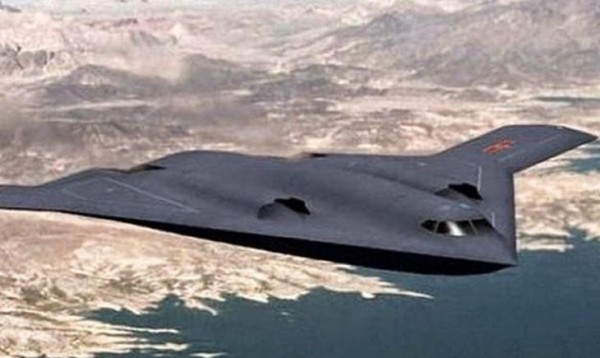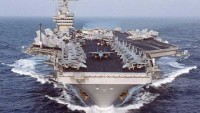China Building own Stealth Bomber Helped by Data from Convicted Indian Spy
| Arthur Dominic Villasanta | | Jun 23, 2016 11:40 PM EDT |
H-20 concept
Classified information stolen by Noshir Gowadia, an Indian convicted in 2011 for selling U.S. aerospace secrets to China, is apparently helping China make progress in building its H-20 strategic stealth bomber.
The subsonic, low observable bomber with a payload of 10 tons is being designed and built by Xi'an Aircraft Industrial Corporation, which also builds China's largest bomber, the Xi'an H-6. The H-20 will have the same flying wing design as the B-2 Spirit stealth bomber of the U.S. Air Force. It might have a range of 8,000 kilometers without refueling.
Like Us on Facebook
Reports said data provided by Gowadia is proving of value to the Chinese as they continue forward with the H-20. Gowadia was sentenced to 32 years in prison in 2011 for helping China design a cruise missile exhaust nozzle that gives off less heat, making it harder to spot by U.S. military infrared sensors.
The convicted spy also worked on the B-2 project while an employee of the stealth plane's contractor, Northrop Grumman. Gowadia, a naturalized American, agreed to spy for China to pay for expensive improvements to his mansion in Hawaii.
The H-20 is expected to enter service with the People's Liberation Army Air Force by 2025.
China's decision to go ahead with its own stealth bomber seems to have been triggered by its failure to buy the supersonic Tupolev Tu-22M3 variable-sweep wing, long-range strategic and maritime strike bomber developed by Russia's Tupolev Design Bureau.
This Russian bomber has a combat radius of 2,400 kilometers and can carry up to 24,000 kilograms of bombs and missiles.
Western military analysts said China needs the H-20 to deny the U.S. from entering the "First Island Chain" from Alaska to the Philippines, and to cement its military leadership in Asia. They also believe the H-20 could have an unmanned combat aerial vehicle version along the lines of the upcoming "Long Range Strike-Bomber" or LRS-B of the U.S. Air Force.
This next generation stealth bomber, which will succeed the B-2, will have very long range and the ability to loiter for extended periods over distant targets such as those in the South China Sea and Asia, hence its nickname, the "China Bomber."
The LRS-B is intended to "manage" China in a future conflict, said Andrew Krepinevich, a defense policy analyst who currently serves as President of the Center for Strategic and Budgetary Assessments.
The LRS-B is being designed to defeat low-frequency radars as effectively as high frequency sets. It will eventually be capable of delivering the entire range of air delivered nuclear weapons in the US arsenal, a capability only currently afforded USAF B-52 bombers.
Ultimately, the USAF will transform the LRS-B into the world's first unmanned or robotic strategic bomber with unmatched endurance.
In the unmanned role, the LRS-B will be used in non-nuclear combat to rain down guided missiles or guided bombs onto land or naval targets. The nuclear capable versions of the bomber will be manned.
What will distinguish the LRS-B from the current B-1or B-2 bombers is the LRS-B's enhanced stealthiness and its capability to loiter or hover over a battlefield for long periods of time, attacking multiple targets of opportunity with precision.
It's designed to survive daylight raids over heavily defended enemy territory. The LRS-B will carry a weapons load of 14,000 lbs. to 28,000 lbs (6,350 kg to 12,700 kg).
TagsH-20, Noshir Gowadia, Xi'an Aircraft Industrial Corporation, B-2
©2015 Chinatopix All rights reserved. Do not reproduce without permission
EDITOR'S PICKS
-

Did the Trump administration just announce plans for a trade war with ‘hostile’ China and Russia?
-

US Senate passes Taiwan travel bill slammed by China
-

As Yan Sihong’s family grieves, here are other Chinese students who went missing abroad. Some have never been found
-

Beijing blasts Western critics who ‘smear China’ with the term sharp power
-

China Envoy Seeks to Defuse Tensions With U.S. as a Trade War Brews
-

Singapore's Deputy PM Provides Bitcoin Vote of Confidence Amid China's Blanket Bans
-

China warns investors over risks in overseas virtual currency trading
-

Chinese government most trustworthy: survey
-

Kashima Antlers On Course For Back-To-Back Titles
MOST POPULAR
LATEST NEWS
Zhou Yongkang: China's Former Security Chief Sentenced to Life in Prison

China's former Chief of the Ministry of Public Security, Zhou Yongkang, has been given a life sentence after he was found guilty of abusing his office, bribery and deliberately ... Full Article
TRENDING STORY

China Pork Prices Expected to Stabilize As The Supplies Recover

Elephone P9000 Smartphone is now on Sale on Amazon India

There's a Big Chance Cliffhangers Won't Still Be Resolved When Grey's Anatomy Season 13 Returns

Supreme Court Ruled on Samsung vs Apple Dispute for Patent Infringement

Microsoft Surface Pro 5 Rumors and Release Date: What is the Latest?













